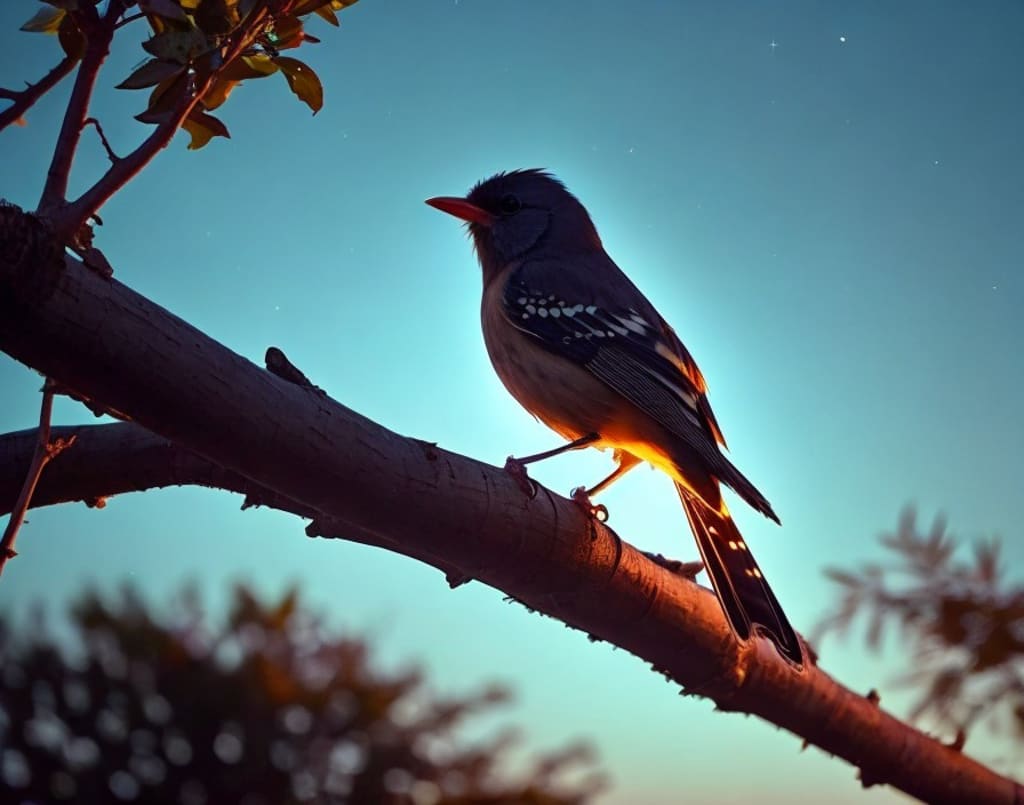Nocturnal Glow: The Silent Disruptor of Avian Life
Shedding Light on the Nighttime Dilemma Facing Our Songbirds

City Lights, Silent Nights: How Artificial Glow Disrupts the Symphony of Songbirds
Beneath the ever-expanding glow of our cities, a silent threat lurks - artificial light pollution (ALP). While well-lit streets keep us safe, this constant illumination disrupts the natural world, particularly the delicate sleep-wake cycles of songbirds. Their nighttime chorus, a vital part of healthy ecosystems, may be facing a quiet demise.
Disrupted Rhythms: Songbirds and the Sun's Song
Songbirds, like us, are diurnal creatures. Their internal clocks synchronize with the rising and setting sun, dictating periods of activity and rest. This synchronization is crucial for various physiological processes, including hormone production, metabolism, and even immune function. But the intrusion of artificial light disrupts this natural rhythm, potentially leading to unforeseen consequences.
A recent study by Dr. Jenny Ouyang, an associate professor of biology at the University of Nevada, Reno, sheds light on the unseen impact of ALP on songbird physiology. Her research goes beyond the well-established disruption of sleep patterns.
Beyond Sleepless Nights: Unveiling the Impact on Bird Brains
Dr. Ouyang's research, presented at the 2024 American Physiology Summit, investigated the effects of varying light conditions on zebra finches, a popular songbird model. The study design involved exposing male zebra finches to three distinct scenarios: natural daylight hours, complete darkness at night, and continuous artificial light during nighttime.
The researchers employed a clever technique – special perches equipped with sensors to meticulously track the birds' hopping activity, a reliable indicator of their overall movement and potentially, sleep patterns. Additionally, they analyzed brain activity after exposure to different light conditions.
The results were startling. Zebra finches exposed to ALP exhibited significantly higher hopping activity at night, mirroring their daytime behavior. This suggests a potential disruption in their sleep patterns, leading to restlessness during what should be their designated rest period. Conversely, periods of complete darkness were associated with minimal hopping, indicating restful sleep.
The brain analysis revealed a deeper concern. Dr. Ouyang's team observed a significant increase in the expression of a protein linked to neural activity in brain regions vital for movement, learning and memory, and vision. In simpler terms, artificial light triggered heightened brain activity in zebra finches during what should be their sleep time. This suggests potential long-term consequences beyond just disrupted sleep.
A Chorus of Unanswered Questions: Long-Term Effects and the Ripple Effect
Dr. Ouyang's findings raise a chorus of critical questions about the long-term effects of ALP on songbirds and other wildlife. How do these immediate changes in brain activity translate to a bird's behavior the next day? Could chronic exposure to artificial light affect their ability to navigate, forage for food, or evade predators? Studies suggest it might. Research on European robins exposed to ALP showed a decrease in foraging efficiency, potentially impacting their survival and breeding success.
The impact may extend beyond songbirds. Nocturnal insects, a vital food source for many birds, are also affected by ALP. Disrupted flight patterns due to light disorientation can lead to population decline, creating a ripple effect throughout the ecosystem.
Conclusion:
Dr. Ouyang's research sheds light on the unseen consequences of artificial light pollution for songbirds and potentially a wider range of wildlife. The disruption to sleep patterns and heightened neural activity raise concerns about long-term effects on behavior, survival, and reproduction. Understanding the impact of ALP is crucial for fostering sustainable urban environments. By implementing solutions like shielded lights, motion sensors, and warmer color temperatures, we can create a balance between the needs of our cities and the delicate rhythms of the natural world. This ensures that the symphony of birdsong continues to fill the night air, enriching our urban soundscapes and reminding us of the interconnectedness of life.
About the Creator
suren arju
Hi there! I'm Suren, your startup guide. Entrepreneur, writer, dreamer - I share insights, tips & stories to fuel your startup journey. Ready to explore, learn & win together? Join me & let's redefine how we launch, learn & leap!
Enjoyed the story? Support the Creator.
Subscribe for free to receive all their stories in your feed. You could also pledge your support or give them a one-off tip, letting them know you appreciate their work.





Comments
There are no comments for this story
Be the first to respond and start the conversation.